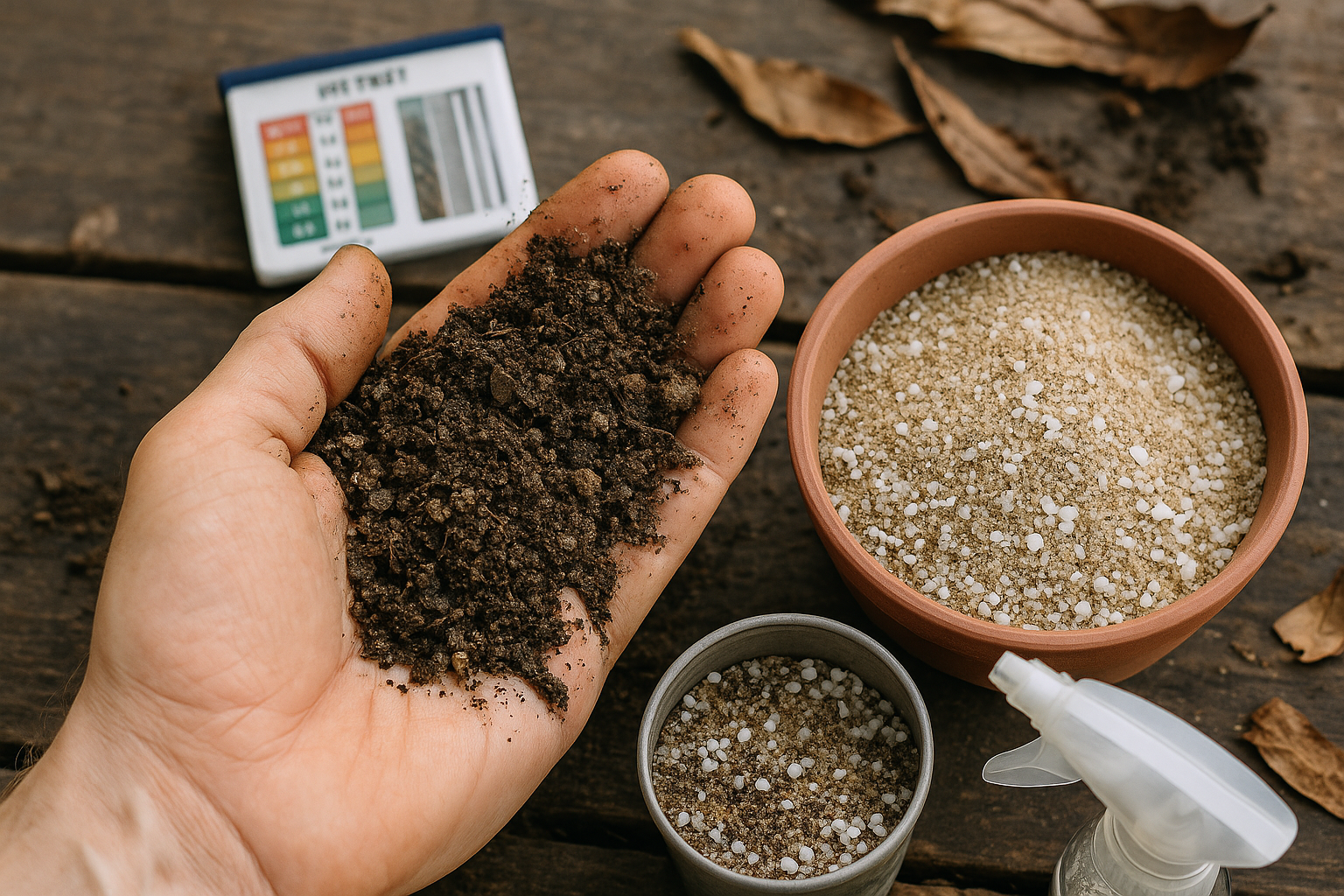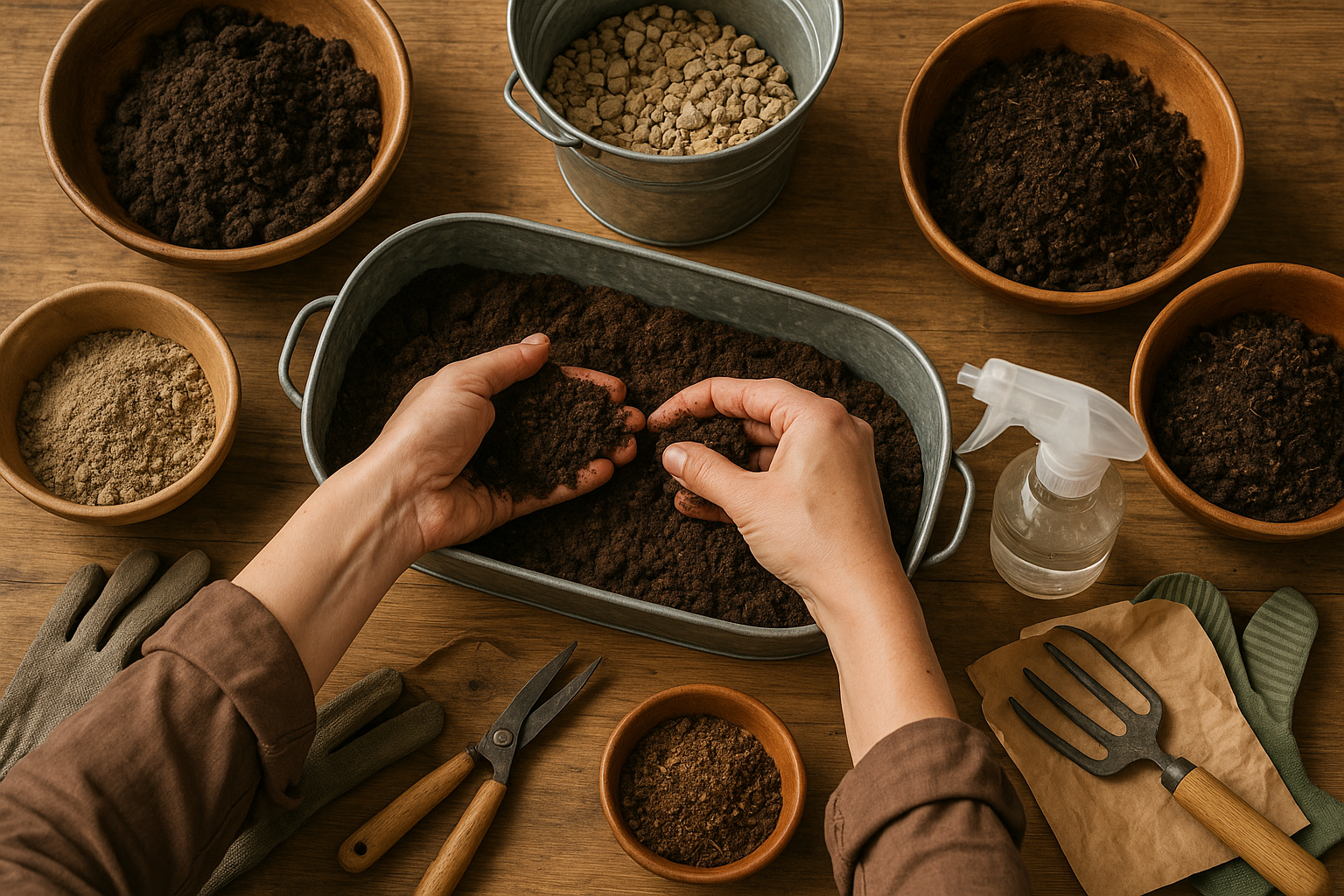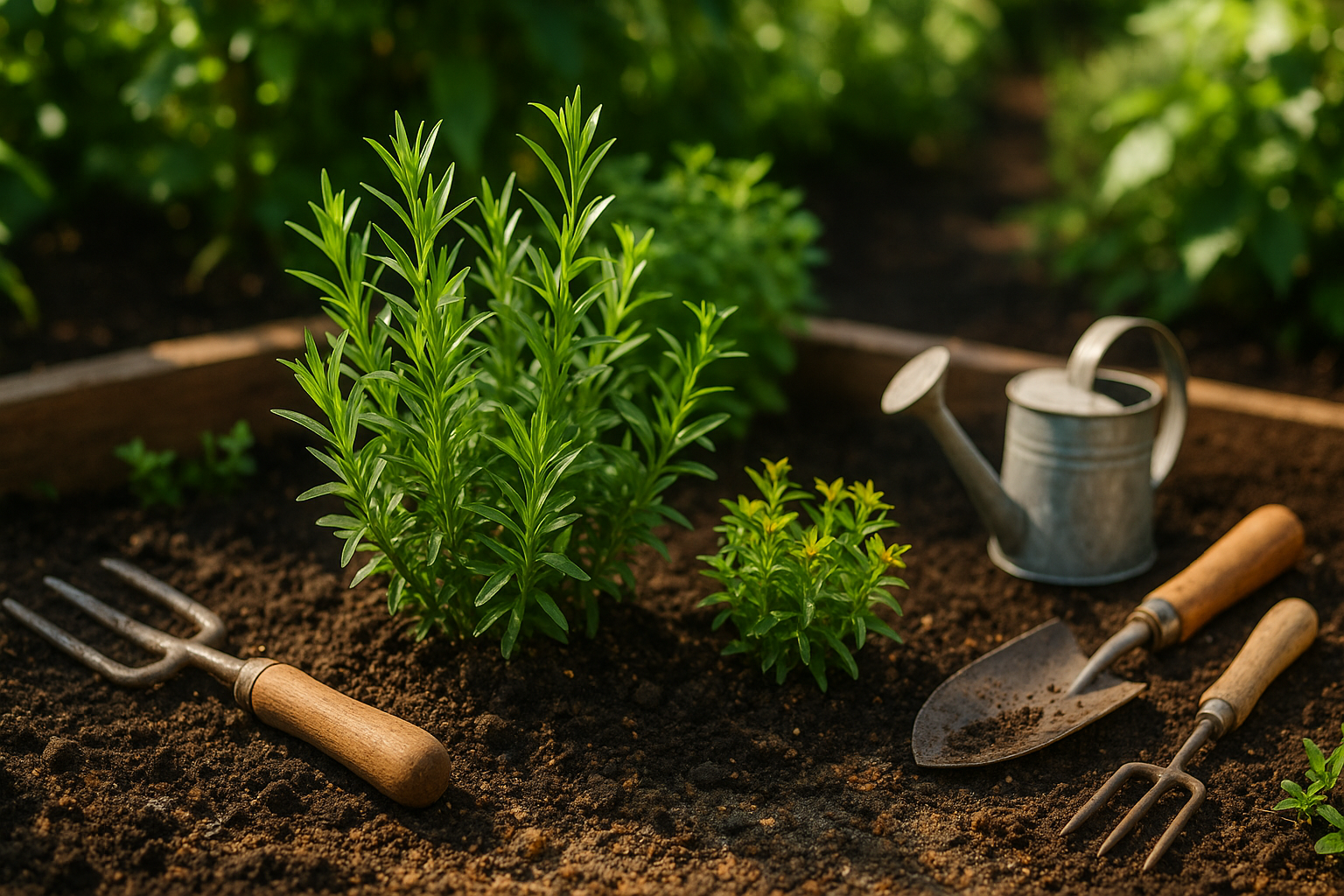Introduction
If you’re searching for the best soil for tarragon, you’re already on the right track to growing a lush, flavorful herb that’s a favorite among cooks worldwide. Tarragon’s delicate, anise-like flavor shines in the kitchen, but its health in your garden starts right beneath the surface—with the soil.
The right soil is essential: it provides the nutrients, drainage, and support your tarragon needs to flourish, whether you tuck it into an outdoor bed or a sunny windowsill pot. In this article, we’ll explore what makes soil ideal for tarragon, offer practical tips for preparing your planting spot, and share simple ongoing care strategies to keep your plants healthy.
Whether you’re an experienced gardener or just getting started, these insights will help ensure your tarragon delivers delicious leaves season after season.
Ideal Soil Conditions for Thriving Tarragon

Tarragon thrives best in loose, well-draining soil with a light, crumbly texture—think sandy or loamy soils that mimic its native Eurasian steppe environments. Heavy, compacted, or clay-rich soils retain too much moisture, which can quickly lead to root rot and unhealthy plants.
The ideal soil pH for tarragon ranges from slightly alkaline to neutral, about 6.5 to 7.5. It’s a good idea to do a quick pH test with a home kit before planting. If your garden soil is on the acidic side, adding a bit of garden lime can help adjust the balance.
Good drainage is absolutely crucial for tarragon: excess water should never pool around the roots. To test drainage, dig a small hole about 8 inches deep, fill it with water, and see if it drains completely within an hour. If not, consider raised beds, adding coarse sand, or planting in containers with drainage holes.
In containers, use a lightweight potting mix blended with some horticultural sand or perlite. Mimicking tarragon’s natural home—sunny, dry meadows with minimal but regular moisture—encourages lush growth and the best herbal flavor, whether you’re growing this aromatic herb on a patio or right in your backyard soil.
Spotting and Fixing Unhealthy Soil
Unhealthy soil can quickly sabotage your gardening efforts, but there are a few tell-tale signs that make it easy to spot. If you notice water pooling after rain, stunted plant growth, yellowing leaves, or a sour smell coming from the soil, these are clear indicators that your soil may be in trouble.
To check drainage, dig a small hole about a foot deep, fill it with water, and observe how long it takes to drain—if water remains after an hour or two, your soil likely has poor drainage. Another trick is to squeeze a handful of moist soil; if it forms a tight ball and doesn’t crumble, it might have too much clay.
Luckily, you don’t need expensive solutions—simple amendments can make a world of difference:
- Mix in coarse sand or perlite to lighten heavy, compacted soil, allowing roots to breathe and water to flow better.
- Work in a layer of compost for a nutrient boost; it improves both texture and fertility.
Many gardeners use a blend of compost and perlite for stubborn spots, seeing visible improvements in plant health within a few weeks. By tackling problems early with these simple fixes, you can enjoy lush, thriving plants all season long.
Crafting the Perfect Soil Mix for Tarragon

To give your tarragon the best start, try this easy homemade potting mix: combine two parts quality garden soil, one part coarse sand, and one part well-rotted compost. The garden soil provides structure and essential minerals, while the sand boosts drainage to help prevent root rot—a common issue for tarragon, which dislikes soggy roots. Compost adds slow-release organic nutrients, giving your herb a gentle growth boost over time.
If you’re short on time, choose a commercial potting soil labeled “herb mix” or “vegetable container mix.” Look for options with perlite or vermiculite for drainage and added compost or worm castings if possible.
To prepare your container or garden bed, first fill the bottom with a layer of gravel or broken pottery shards to further enhance drainage. Then fill up with your potting mix, leaving about an inch below the rim for watering. Water the mix lightly before planting to help it settle. Press tarragon roots gently into the soil, fill in around them, and give another light watering.
Good drainage is key—so always check that water flows freely from the bottom to keep your tarragon happy and healthy.
Planting and Sowing Tarragon
Preparing your garden soil is essential for healthy tarragon, whether you’re starting from seed or transplanting young plants. Begin by clearing away rocks, sticks, weeds, and any leftover roots—debris left behind can compete with tarragon for nutrients and water.
Next, use a garden fork or tiller to loosen compacted soil to at least 8–10 inches deep; tarragon prefers airy, well-draining conditions.
For seeds, sow them directly onto the surface of moist, finely raked soil, then lightly press them in without covering, as they need light to germinate. Keep the top inch of soil consistently damp—but not soggy—until seedlings emerge.
If transplanting tarragon seedlings, dig holes just big enough for the root ball and blend in a handful of organic compost to enrich the soil and support robust growth. Be sure the soil is moist but not waterlogged before setting in transplants.
After planting, spread a thin 1–2 inch layer of mulch—such as straw, chopped leaves, or fine bark—around your newly sown or transplanted tarragon. Mulching suppresses weeds, moderates soil temperature, and locks in precious moisture—crucial for healthy, flavorful herbs all season long.
Store-Bought Soils vs. DIY Mixes
When choosing between store-bought potting soils and DIY mixes, it’s important to consider your specific needs and gardening goals. Store-bought specialty soils offer unmatched convenience—they’re ready to use, expertly blended for different plant types (like succulents or orchids), and often include helpful extras like slow-release fertilizer or added aeration. This makes them ideal for busy gardeners or beginners who want a reliable, hassle-free option.
However, DIY mixes shine when you want full control over the ingredients, especially if you have sensitive or rare plants that need customized care. Mixing your own soil can also be more affordable, particularly for larger projects or when reusing bulk ingredients like peat, perlite, or compost.
The main drawbacks of DIY are the extra time and effort required, plus the risk of mistakes if you’re new to soil mixing. Ultimately, store-bought soils are best for fast, predictable results, while DIY appeals to budget-conscious or detail-oriented gardeners.
Ongoing Soil Care for Healthier Tarragon Plants
To keep your tarragon plants thriving, ongoing soil care is essential. Start by top-dressing the soil every few months with a thin layer of organic compost; this boosts nutrients and encourages healthy root growth without disturbing the plant.
Regularly check your soil’s pH, aiming for a slightly acidic to neutral range (6.5–7.5). You can easily do this with a store-bought test kit. Avoid the common mistake of overwatering—tarragon prefers soil that’s moist but never soggy. Let the top inch dry out between waterings to prevent root rot.
If you’re growing tarragon in containers, make it a habit to refresh or replace the potting mix at least once a year. Old soil often becomes compacted or depleted, which can stunt growth. A quick soil refresh keeps drainage optimal and provides fresh nutrients, giving your tarragon the best chance for long-term vigor.
